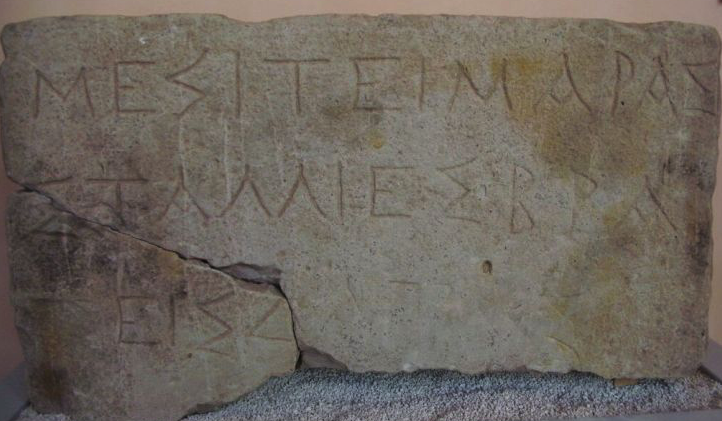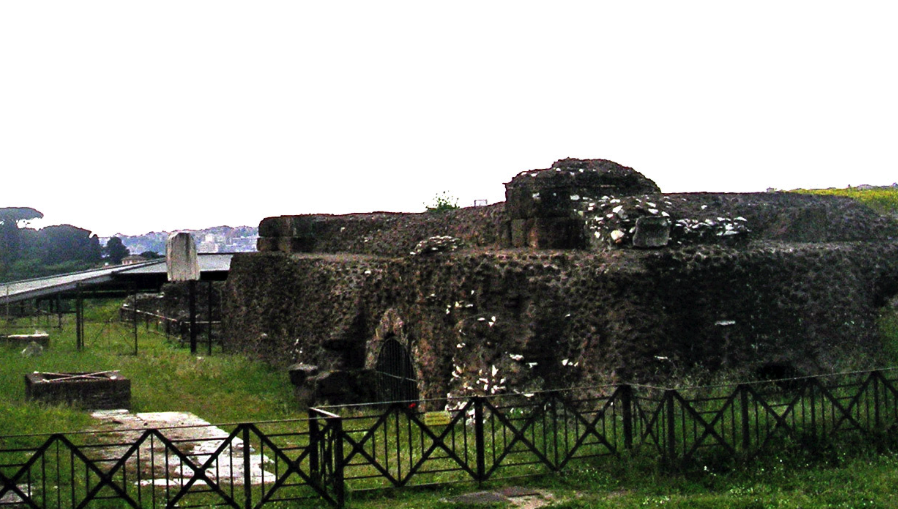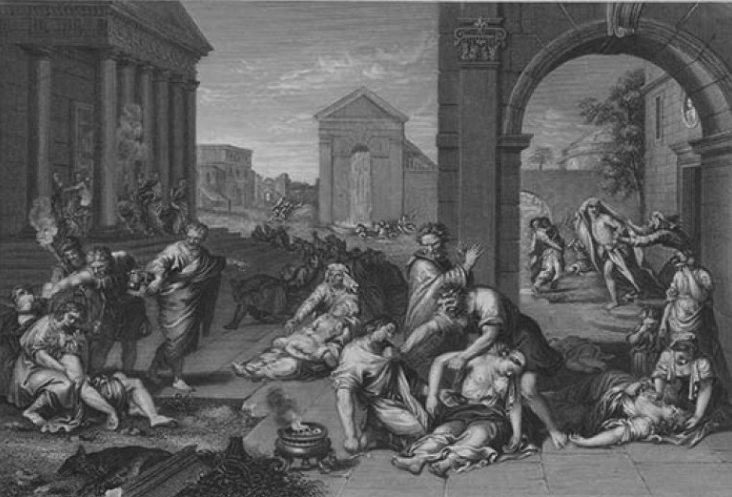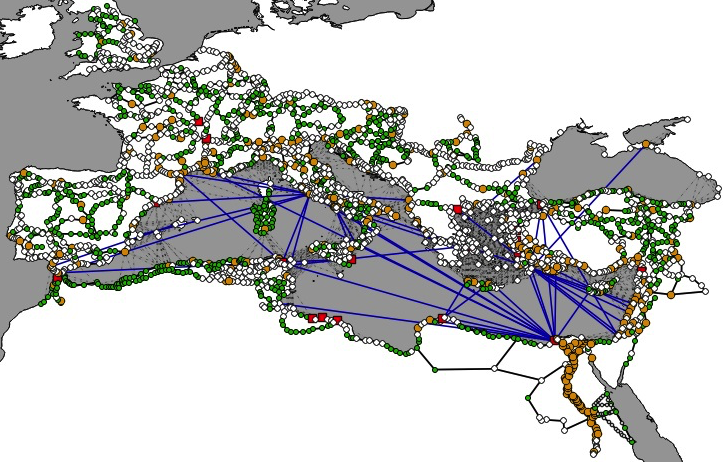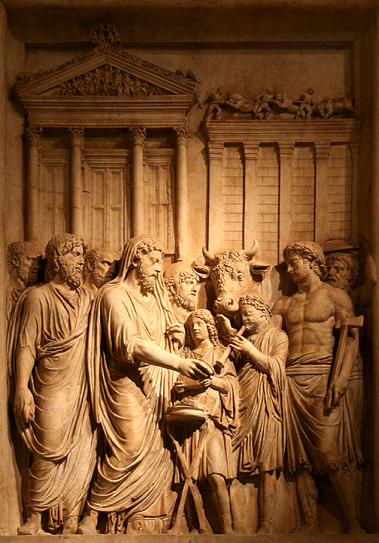
Welcome back to The World of The Dragon: Genesis. In our last post on the research that went into this latest book, we looked at the Evocati of ancient Rome. If you missed it, you can read it HERE.
The Dragon: Genesis spans the reigns of a few emperors. It begins during the reign of Antoninus Pius, but then moves on into unique period for Rome, a time when it was ruled jointly by two emperors, Marcus Aurelius and Lucius Verus.
Surprisingly, as we shall see, these two men ruled amicably, despite their differences. However, the peace of Antoninus’ reign was over, and the new emperors faced pressures and threats from outside.

Map of the Roman Empire at its greatest extent (Oxford Research Encyclopedias)
First, we need to set the stage.
By the time Marcus Aurelius and Lucius Verus came to the imperial throne, the Roman Empire had enjoyed a period of unprecedented peace under the well-loved emperor, Antoninus Pius, who had reigned for the longest period of time since Augustus, from A.D. 138-161.
One of the only sources that survives for this period in Rome’s history is the Historia Augusta, a highly-contested, often doubted, source that relates some of the details of the reigns of certain of Rome’s emperors.
During Antoninus’ reign, a young Marcus Aurelius was already making himself known in the upper echelons of Roman society, so much so that he was a favourite of Emperor Hadrian before Antoninus Pius donned the purple.
It is believed that Emperor Hadrian would have liked for Marcus Aurelius to succeed him, but because of his young age, he chose Antoninus Pius. Prior to his death in A.D. 138, Hadrian, who cared much for the young Marcus Aurelius and Lucius Verus, seems to have pressured Antoninus Pius into adopting them, thus ensuring their possible involvement in a later succession. Hadrian seems to have been a forward-thinking man.
Antoninus Pius, of course, agreed.
Marcus did not seem suitable, being at the time but eighteen years of age; and Hadrian chose for adoption Antoninus Pius, the uncle-in‑law of Marcus, with the provision that Pius should in turn adopt Marcus and that Marcus should adopt Lucius Commodus. And it was on the day that Verus was adopted that he dreamed that he had shoulders of ivory, and when he asked if they were capable of bearing a burden, he found them much stronger than before. When he discovered, moreover, that Antoninus had adopted him, he was appalled rather than overjoyed, and when told to move to the private home of Hadrian, reluctantly departed from his mother’s villa. And when the members of his household asked him why he was sorry to receive royal adoption, he enumerated to them the evil things that sovereignty involved.
(Historia Augusta, The Life of Marcus Aurelius 5)
Then, in A.D. 140, Marcus Aurelius was made consul with Antoninus and given the title of ‘Caesar’ which officially made him Antoninus’ heir.
Now, Antoninus, who was married to Hadrian’s niece, Faustina (the Elder), did have four children, two sons and two daughters, but they all died young, except for his daughter Faustina (the Younger).
In A.D. 146, Marcus Aurelius was married to Faustina the Younger, further cementing his role as Antoninus’ successor, a role he is said not to have wanted.
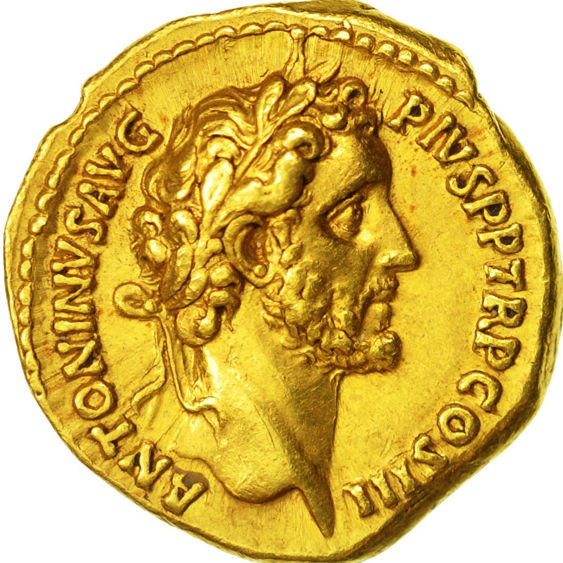
Gold aureus of Antoninus Pius
As time passed, Antoninus Pius grew older and weaker, and Marcus Aurelius took on more administrative duties for the empire, especially after the death of Antoninus’ trusted Praetorian Prefect, Gavius Maximus.
Then, in A.D. 161, while at an estate in Etruria, Antoninus grew ill and called the imperial council together to formally pass the state to Marcus Aurelius. It is said that one of the last words he uttered when a tribune came to him for the night’s watchword was aequanimitas, or equanimity.
One has to wonder if Antoninus Pius really did feel a true sense of calm as he faced death, knowing that he had ruled well and that he was leaving the Empire in capable hands.
The reign of Marcus Aurelius was underway.
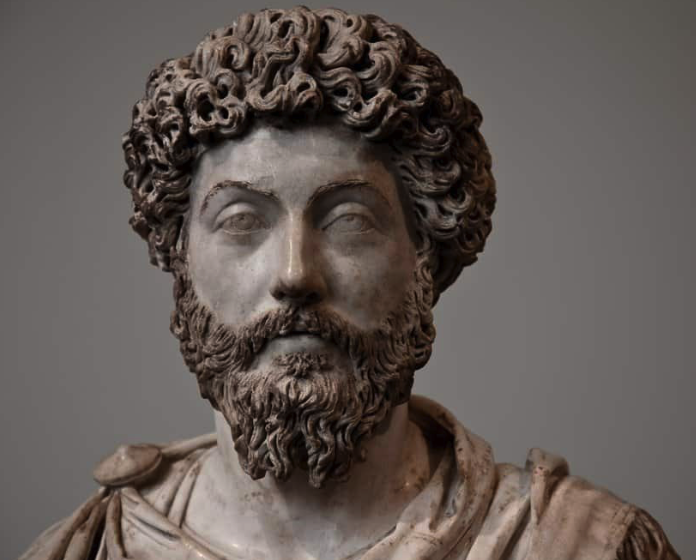
Marcus Aurelius
But Marcus Aurelius did not want to rule, and so the wheels were set in motion for the reign of two emperors and friends.
However, before we go further, let us look at these two men. Who were Marcus Aurelius and Lucius Verus?
Marcus Aurelius was born Marcus Annius Verus, and studies played a large role in the young man’s life. His teachers included Diognetus and Tuticius Proclus who seems to have introduced him to philosophy, a subject that Marcus took to immediately.
Philosophy played a large role in the life of Marcus Aurelius, affecting his life and his character. Even in A.D. 140 when he was made Emperor Antoninus’ heir, Marcus began studying with the sophist, Herodes Atticus, the man who built many monuments in Greece, including the great theatre beside the Acropolis of Athens. He also studied with Marcus Cornelius Fronto.
But it was the philosopher Quintus Junius Rusticus who is said to have introduced Marcus to the ways of stoicism that he would come to love and adhere to. Marcus Aurelius’ work, Meditations, was the product of his stoic view of the world and it is still widely read to this day.
One could say that stoicism is what got Marcus Aurelius through the more difficult times of his reign.
As far as a home life, Marcus Aurelius had thirteen children with his wife/cousin, Faustina the Younger, and among these were Lucilla and Commodus.
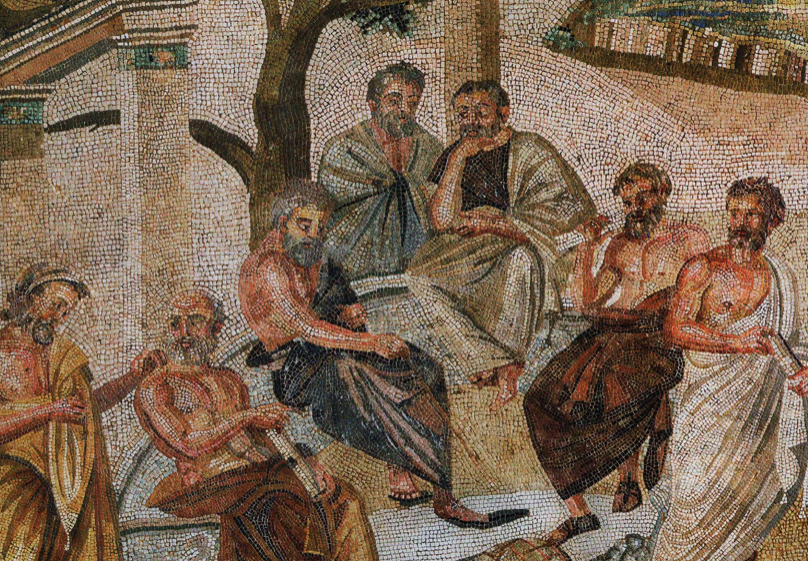
The Philosopher’s Life? Mosaic from Pompeii depicting Plato and students
It seems that Hadrian’s favour of Marcus, and the condition he might have placed on Antoninus to adopt Marcus in order to succeed, weighed heavily on the young philosopher. Marcus was Antoninus’ sole heir, but when Antoninus died in A.D. 161, and the Senate made Marcus ‘Augustus’, ‘Imperator’, and ‘Pontifex Maximus’, it is said that he resisted. He preferred the philosophic life, but his stoicism compelled him to accept his duty, and despite his reluctance, he rose to the challenge:
Toward the people he acted just as one acts in a free state. He was at all times exceedingly reasonable both in restraining men from evil and in urging them to good, generous in rewarding and quick to forgive, thus making bad men good, and good men very good, and he even bore with unruffled temper the insolence of not a few.
(Historia Augusta, The Life of Marcus Aurelius 12)
The Senate was going to confirm him as sole emperor, but Marcus refused unless Lucius Verus, his ‘brother’ beneath Antonius Pius, was given equal powers.
The Senate approved, and though officially, Marcus had more authority, Rome had two emperors for the very first time in its history: Imperator Marcus Aurelius Antoninus Augustus, and Imperator Lucius Aurelius Verus Augustus.
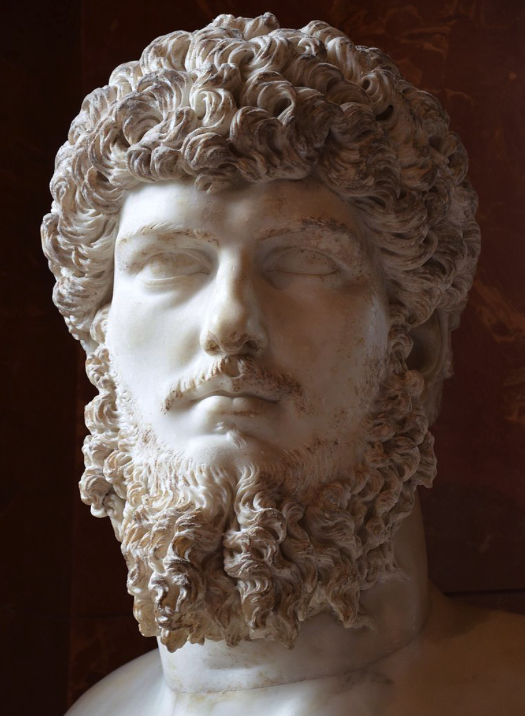
Lucius Verus
What do we know about Lucius Verus?
Apart from what the Historia Augusta tells us, we know relatively little about Marcus Aurelius’ co-ruler.
Born Lucius Ceionius Commodus (the Younger), he was a member of the Nerva-Antonine dynasty, and his father, Lucius Aelius Caesar was Emperor Hadrian’s fist adopted son and heir. However, Verus’ father died in A.D. 138, and that is when Hadrian decided on Antoninus Pius as his successor.
Lucius Verus and Marcus Aurelius, though friends and ‘brothers’, appear to have been quite different.
Whereas Marcus Aurelius remains the calm stoic, preferring philosophy and a quieter life, Lucius Verus’ interests were said to be lower. He was fanatical about the games and chariot races, as well as gladiatorial combat, and he was said to enjoy lavish parties. He was quite the opposite of Marcus.
Lucius Ceionius Aelius Commodus Verus Antoninus — called Aelius by the wish of Hadrian, Verus and Antoninus because of his relationship to Antoninus — is not to be classed with either the good or the bad emperors. For, in the first place, it is agreed that if he did not bristle with vices, no more did he abound in virtues; and, in the second place, he enjoyed, not unrestricted power, but a sovereignty on like terms and equal dignity with Marcus, from whom he differed, however, as far as morals went, both in the laxity of his principles and the excessive licence of his life. For in character he was utterly ingenuous and unable to conceal a thing.
(Historia Augusta, The Life of Lucius Verus 1)
Despite their differences, the two emperors seemed to have been able to make things work. It was as if they balanced each other. Marcus Aurelius is said to have disapproved of his co-ruler’s behaviour and vices, but he also saw that Lucius Verus fulfilled his imperial duties. Marcus even went so far as to betroth his eleven year old daughter, Lucilla, to Lucius Verus.
Things were looking bright in Rome. The emperors enjoyed the love of the people, and yet, there was great respect for the Senate and its traditions. Free speech was permitted, and the public service in government was running smoothly.

The Forum Romanum with the temple of Antoninus and Faustina at the back right
The reign of Marcus Aurelius and Lucius Verus, however, was not to be the period of Pax Romana that marked the golden age of Antonius Pius.
Sadly, the drums of war began to sound across the Empire.
Two major wars marked the period: the Parthian war (A.D. 161 – 166) in the East, and the Marcomannic Wars (A.D. 166 – 180) in the North.
Because of aggressions shown by Vologasses IV of Parthia, and the subsequent massacre of one legion led by Marcus Severianus, the governor of Cappadocia, it was decided that Rome’s legions needed to march east.
The campaign was led by Lucius Verus, while Marcus Aurelius remained in Rome.
In fact, Verus spent most of his rule in Antioch, overseeing the Parthian campaign which was, in many ways, a success. Order was eventually restored.
It is said that Verus was a responsible commander and that he brought back discipline to the ranks of the Syrian legions who had grown soft during the prior peace. He was a good commander who knew when and how to delegate to men who were more knowledgeable, including his generals Marcus Claudius Fronto, and Martius Verus.
However, his vices followed him there, and in Antioch he is said to have lived a life of extreme luxury with grand parties. And he kept himself updated on the chariot racing in Rome by ordering regular reports sent to him about his favourite teams.
He also spend a great deal of time in the East with his mistress, Panthea, a low-born woman who was said to be a great beauty. Still, despite this, he did travel to Ephesus c. A.D. 163 to marry Marcus Aurelius’ daughter, Lucilla, who was only about fourteen at the time. She became Lucilla Augusta and they had three children together, all of whom died young. After the marriage, Verus returned to Antioch.

Coin depicting Lucilla Augusta, daughter of Marcus Aurelius and wife of Lucius Verus
Lucius Verus certainly preferred bread and circuses to Marcus Aurelius’ love of learning and philosophy, but still, they seem to have worked well together.
When the Parthian campaign was successfully concluded, Lucius Verus was given the title of Parthicus Maximus. He and his men returned to Rome, but they were not only carrying coronae of victory with them. They also brought plague.
We will cover the ‘Antonine Plague’, as it is known, in the next post in this blog series, but suffice it to say, it was devastating.
And as Rome fought the plague at home, the Germanic tribes took the opportunity to attack in the North.

Depiction of the Marcomannic Wars on the Column of Marcus Aurelius
The Marcomannic Wars raged from A.D. 166 – 180 in a series of three major campaigns that took Rome’s legions across the Danube frontier against the rebellious tribes which included the Quadi, Marcomanni, Iazyges, Sarmatians, and the Dacians who had been peaceful for a time during the reign of Antoninus. It was an all-out offensive by the barbarian tribes.
This time, both Marcus Aurelius and Lucius Verus marched north with the legions to wage a war that would last the rest of their lives.
After two years of campaigning, the two emperors returned to Rome and it was then that Lucius Verus fell ill. Some said that it was food poisoning that killed him, but modern historians believe that it may well have been the plague that had returned with his men from Parthia.
Lucius Verus died and was grieved by Marcus Aurelius who, fittingly, put on games in his honour. He also had his co-emperor deified by the Senate as ‘Divus Verus’.
Marcus Aurelius now ruled alone.
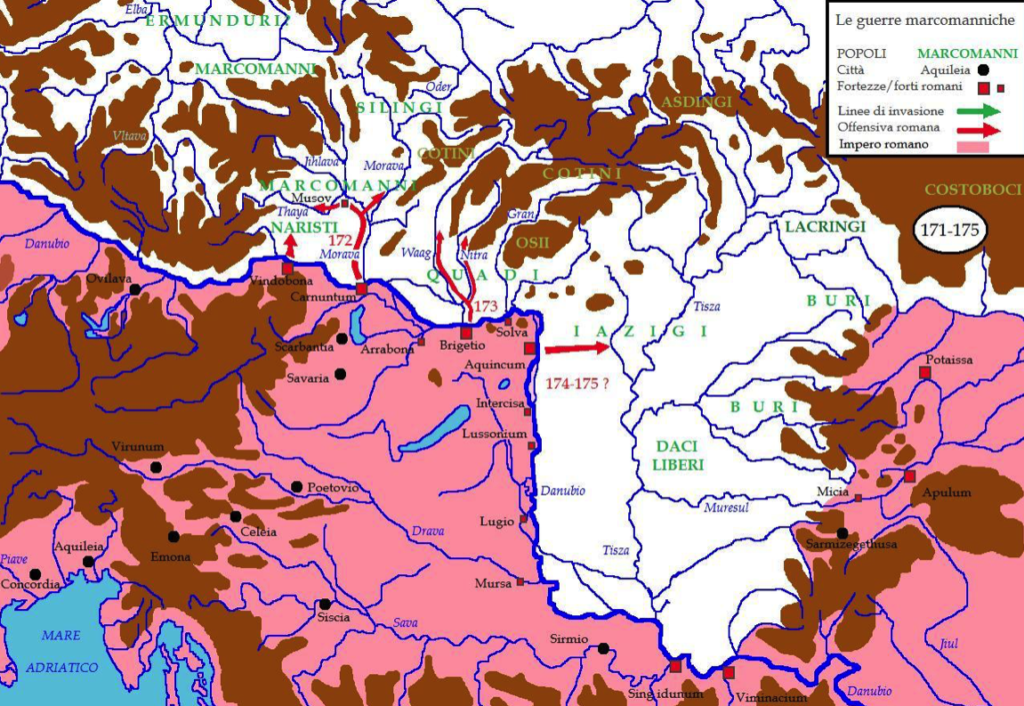
Map of Marcomannic Wars (Wikimedia Commons)
After the death of Verus, Marcus Antoninus held the empire alone, a nobler man by far and more abounding in virtues, especially as he was no longer hampered by Verus’ faults, neither by those of excessive candour and hot-headed plain speaking, from which Verus suffered through natural folly, nor by those others which had particularly irked Marcus Antoninus even from his earliest years, the principles and habits of a depraved mind. Such was Marcus’ own repose of spirit that neither in grief nor in joy did he ever change countenance, being wholly given over to the Stoic philosophy, which he had not only learned from all the best masters, but also acquired for himself from every source.
(Historia Augusta, The Life of Marcus Aurelius 16)
Marcus Aurelius has come down to us as one of the most noble emperors of Rome, the last of the ‘five good emperors’ as they have come to be known.
After the death of his friend and co-emperor, Marcus Aurelius brought the Marcomannic Wars to a successful conclusion. He also improved the judicial system as well as the system for distributing food. The management of the treasury was made more efficient too. He saw to the care of children, and constantly improved the civil service of which he had been a part in his early career. The Senate too, remained respected.
If he made one mistake during his reign, it was perhaps to trust his own son.
After the death of Lucius Verus and a period of lone rule, Marcus Aurelius named his son, Commodus, as co-ruler in A.D. 177. We will not go into the details of Commodus’ rule here. We need only know that it was nothing like his father’s reign, or Antoninus Pius’ before him.
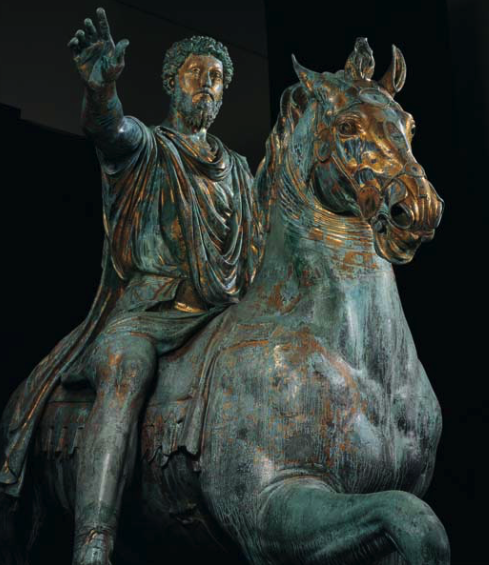
Equestrian statue of Marcus Aurelius in the Capitoline Museum
Being the ruler of the greatest empire in the world could not have been an easy burden, especially for a man like Marcus Aurelius who had duty thrust upon him. This was in contrast to the life of thinking which he obviously preferred. In many ways, perhaps many of us can relate today. How many people live lives they had not intended for themselves?
Marcus Aurelius’ stoic philosophy no doubt helped him to come to terms with what fate had dealt him, but perhaps his insistence to the Senate that Lucius Verus rule with him was his way of alleviating some of the burden he felt?
It is difficult to say, but one thing we can be certain of is that, despite the lack of sources, the reign of Marcus Aurelius and Lucius Verus will always stand out in the history of Rome as a time like no other.
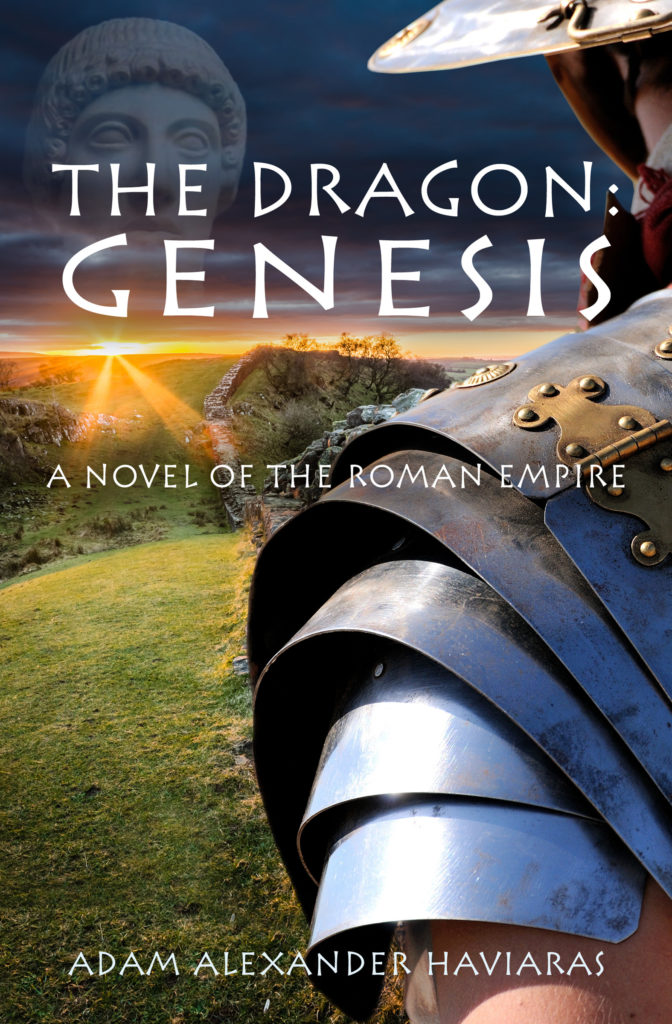
If you have not read our latest historical fantasy novel, The Dragon: Genesis, you can download a free copy on the Eagles and Dragons website by CLICKING HERE.
Be sure to watch for the next post in The World of The Dragon: Genesis, where we will be taking a brief look at the effects of the Antonine Plague.
Thank you for reading.







